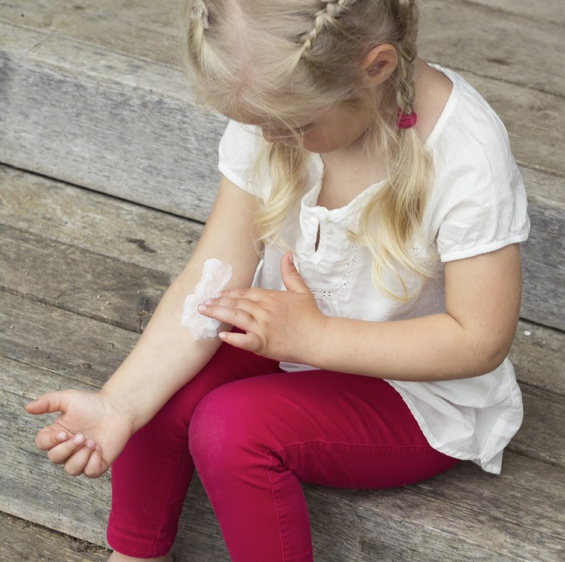
| Tips and Advice | Explanation |
|---|---|
| When using an emollient for the first time test a small amount on an area of skin and leave for 48 hours. If there is no reaction or irritation apply all over the affected area of skin | Some people may be sensitive to certain ingredients found in the emollient and so react to them. Testing a small area limits any potential reaction to the test area alone and so doesn’t aggravate skin that is already sensitive and irritated |
| Keep finger nails short & smooth | Keeping finger nails short and smooth prevents accidental damage to the skin surface when applying emollients or scratching (although scratching should be avoided). Long nails can also harbour bacteria under them, which, along with the bacteria staphylococcus (found on the skin) and other pathogens, can enter broken and irritated skin causing further irritation, inflammation and infection |
| Wash hands before applying emollients | This removes bacteria, which are invisible to the eye, from your hands thus reducing the risk of infection |
| Pump dispensers reduce the risk of product contamination | Pump dispensers eliminate the need to use your fingers to scoop out the emollient from the container so stopping the bacteria, found on fingers and possibly under the nails, from getting into the emollient and subsequently into the broken skin of an eczema, psoriasis or dry skin sufferer |
| Always use a clean spoon to scoop out emollients that come in tubs and transfer the amount required into a clean container or plate and use from there | Putting your hands into a tub of emollient can cause bacterial contamination of the product, which can subsequently get into broken, irritated skin. By using a clean spoon to take out the exact amount needed minimises contact with the emollient |
| Emollients should be applied regularly, liberally and frequently (at least three times a day) | The effects of emollients don’t last long so they need to be applied frequently. Regular emollient application keeps the skin protected and hydrated and can reduce the need for steroid creams. It is important to note that you cannot overuse emollients so they should be applied liberally and as often as needed |
| Apply emollients downwards in the direction of hair growth | This reduces the risk of blocking hair follicles and causing folliculitis – inflammation of the hair follicles |
| Emollients should be applied using gentle strokes | Vigorous strokes or rubbing can generate heat making the skin itchy and irritated, which can lead to scratching so exacerbating the itch-scratch cycle |
| Continue applying emollients after your skin has improved | This continues to help hydrate and protect the skin and reduces the risk of flare-ups |
| Apply greasy emollients at night | Greasy emollients are good for night time use as they last longer. Some people also prefer to put them on at night time as they are messy and can transfer onto clothing |
| Apply greasy emollients on very dry or thickened skin | As greasy emollients hydrate the skin more than creams they are ideal for very dry and thickened skin |
| Apply emollients at least 20 minutes before bedtime | This allows time for the emollient to absorb into the skin before you or your child goes to sleep |
| Keep your child occupied whilst trying to put on their emollient | It’s difficult to get a child to sit still at the best of times, let alone while you are trying to put emollients on them. Visit our Kids Zone for some fun, interactive games to help your child learn about their eczema and keep them occupied whilst you put their emollient on |
| Many emollients contain paraffin and when using these you should keep away from fire, including any naked flames and cigarettes | Emollients can get soaked into dressings and clothes. As paraffin is easily ignited with a naked flame it is important to keep away from fire when using paraffin containing emollients |
Tips & Advice Sheet – Applying Emollients Download PDF





